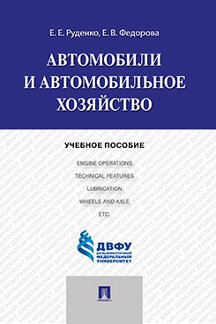|
|
ОглавлениеUNIT I. Automobile. Development of the Automobile. Automobile Industry UNIT II. Components of Automobile UNIT IV. Engine Operation. The Four-Stroke Cycle. The Two-Stroke Cycle Vocabulary. A. B. C. D. E. F. G. H. I, J, K. L. M. N. O. P, Q. R. S. T, U. V. W Для бесплатного чтения доступна только часть главы! Для чтения полной версии необходимо приобрести книгуREADEREvolution of the Internal-Combustion EngineThe first person to experiment with an internal-combustion engine was the Dutch physicist Christian Huygens, about 1680. But no effective gasoline-powered engine was developed until 1859, when the French engineer J. J. Etienne Lenoir built a double-acting, spark-ignition engine that could be operated continuously. In 1862 Alphonse Beau de Rochas, a French scientist, patented but did not build a four-stroke engine; sixteen years later, when Nikolaus A. Otto built a successful four-stroke engine, it became known as the “Otto cycle.” The first successful two-stroke engine was completed in the same year by Sir Dougald Clerk, in a form which (simplified somewhat by Joseph Day in 1891) remains in use today. George Brayton, an American engineer, had developed a two-stroke kerosene engine in 1873, but it was too large and too slow to be commercially successful. In 1885 Gottlieb Daimler constructed what is generally recognized as the prototype of the modern gas engine: small and fast, with a vertical cylinder, it used gasoline injected through a carburetor. In 1889 Daimler introduced a four-stroke engine with mushroom-shaped valves and two cylinders arranged in a V, having a much higher power-to-weight ratio; with the exception of electric starting, which would not be introduced until 1924, most modern gasoline engines are descended from Daimler’s engines. TransmissionThe function of the gearbox is to transmit the engine power to the wheels as efficiently as possible. It must not waste power and must be easy to use. In addition, the gearbox must contribute towards low fuel consumption by enabling appropriate reduction ratios to be selected – either automatically or manually, depending on the type. This has been the basis for the design work on the Saab 9000 gearboxes. As a result, they are lightweight, compact and highly efficient. Saab’s four-cylinder engine, with its low internal friction, allows gear ratios to be chosen for more lively performance than is usually provided by cars with bigger enginesyet fuel economy is unimpaired. This advantage proves particularly valuable in hill country Manual GearboxThe five-speed manual gearbox is of simple design and has small rotating masses, which minimize the gear – shifting effort. It is designed to transmit very high power and torque, with ample margins of safety. The fifth gear ratio has been specified to ensure optimum fuel economy-but without impairing the drivability. Gear-changing is easy due to the favorable locations of the syncromesh mechanisms. Due to the strategic locations of taper roller bearings, .the shafts have high stiffness under load. The gearcase of the manual gearbox has only two joint faces, and all unnecessary covers and connections have been eliminated, to provide virtually perfect sealing. A special oil supply system limits the friction by maintaining a low oil level and makes gear-shifting easy, even when starting from cold. The gear-shift mechanism is contained inside the gearbox itself, so it is always well lubricated. The gear shift rod enters the gearbox at the point around which the gearbox moves when the engine accelerates or decelerates. As a result the gear lever travel is short and distinct. The only part of the gear-shift mechanism that projects outside the gearbox is a long, straight rod, fitted with a rubber joint to minimize the sound transmission to the interior. The gear lever is spring loaded to the 3rd/4th gates and is thus automatically centered in neutral, to ensure that the driver will never be in doubt as to the actual position of the gear lever. The pattern of gear-shifting is designed so that reverse gear cannot be engaged by mistake. Reverse gear is provided with a latch and it has a separate gate to the right of the 5th gear gate. ChassisSince Man is highly sensitive to even the smallest changes in his surroundings, but has poor ability in detecting static changes, this situation has been one of our most important starting points in the design of the Saab 9000 chassis. It is vitally important that the car should give the driver immediate information – through the seat and steering wheel – on the lateral forces, for instance, acting on the car when it is cornering. It is important for the driver to receive this information as quickly and distinctly as possible. Information on whether or not the car is cornering correctly, for instance, must be conveyed to the driver in a matter of tenths or hundredths of a second. The difference between a mature chassis and a dangerous chassis often lies in how these small, almost immeasurable information signals are conveyed to the driver. Внимание! Авторские права на книгу "Автомобили и автомобильное хозяйство. Учебное пособие" (Руденко Е.Е., Федорова Е.В.) охраняются законодательством! |
||||||||||||||||||||||











